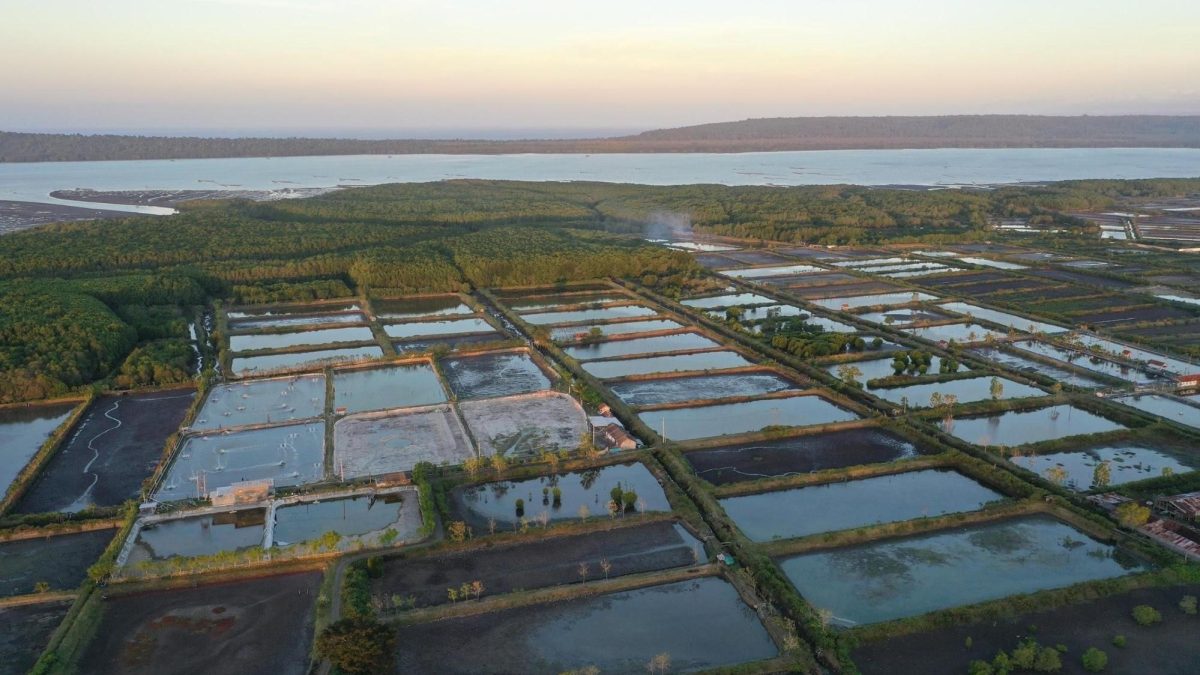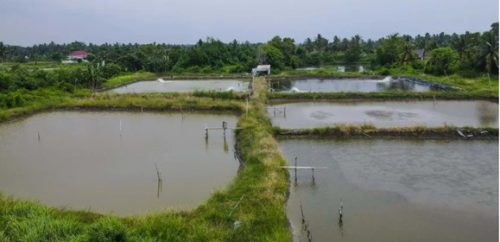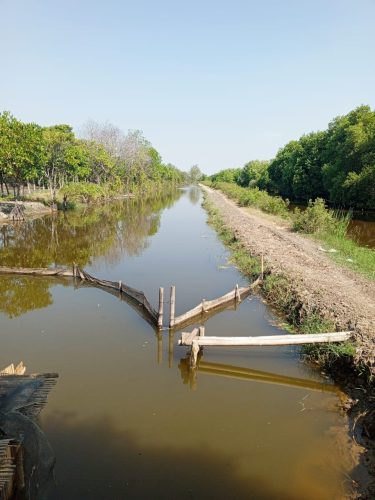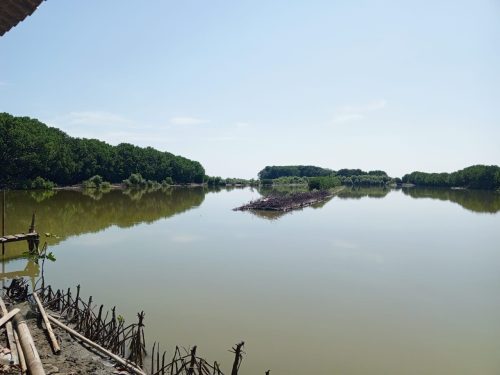Integrating Mangrove Ecosystems with Aquaculture: A Holistic Approach to Coastal Rehabilitation and Local Economic Empowerment

Photo Credit : Audrie Siahainenia
Mangrove ecosystems along Indonesia's coastlines have suffered significant degradation due to a range of human activities, most notably the conversion of these vital areas into aquaculture farms. This widespread loss of mangroves has severely diminished their role in coastal protection, led to a decline in environmental quality, and eroded the economic opportunities they once provided to local communities. Furthermore, the expansion of aquaculture, when not properly managed, has exacerbated these challenges, resulting in increased pollution, accelerated coastal erosion, and reduced overall productivity in the affected regions.
Integrating Aquaculture with Mangroves: A Holistic and Sustainable Solution

Photo Credit : efishery
To effectively tackle the challenges facing coastal ecosystems, a comprehensive approach to aquaculture management that balances ecological preservation with economic benefits for local communities is essential. One particularly promising strategy is the integration of aquaculture systems with mangrove ecosystems.
This innovative system not only aims to restore and rehabilitate degraded mangrove areas but also seeks to enhance aquaculture productivity, thereby improving the livelihoods and well-being of coastal communities. The multifaceted advantages of this integrated approach include:
- Coastal and Mangrove Rehabilitation : By allocating specific areas for the replanting and maintenance of mangroves, this system helps to restore the natural protective functions of coastlines, improve overall environmental quality, and foster greater biodiversity. Mangroves act as natural barriers against storm surges and erosion, while also serving as critical habitats for a wide range of species.
- Enhanced Aquaculture Productivity : Integrating aquaculture with mangroves can significantly improve water quality and increase the availability of natural nutrients, leading to higher aquaculture productivity and greater operational efficiency. The natural filtration and nutrient recycling processes provided by mangroves create a more favorable environment for aquaculture species to thrive.
- Diversification of Community Income : Beyond the direct benefits of aquaculture, this integrated system offers additional income opportunities for coastal communities. By utilizing the diverse resources provided by mangrove forests—such as timber, honey, and ecotourism—communities can diversify their income streams and reduce economic vulnerability.
- Promotion of Sustainable Business Practices : This approach ensures the long-term sustainability of aquaculture by maintaining ecological balance and preventing environmental degradation. It promotes practices that align with the principles of environmental stewardship, thereby safeguarding both the natural ecosystem and the economic viability of aquaculture enterprises for future generations.
Case Study: Integrated mangrove in aquaculture pond (Silvofishery) in Blanakan, Subang, West Java

In Blanakan, Subang, West Java, a notable example of silvofishery has been implemented as a sustainable way to integrate aquaculture with mangrove conservation. This practice combines traditional shrimp farming with mangrove reforestation, providing both ecological and economic benefits to the local community. The silvofishery system in Blanakan has been designed to utilize the land efficiently by planting mangroves around and within aquaculture ponds. This approach not only helps in restoring degraded mangrove ecosystems but also improves the quality of water and the overall environment, which in turn enhances shrimp production. Furthermore, the presence of mangroves acts as a natural buffer against coastal erosion and provides additional sources of income through the harvesting of mangrove-related products like honey and wood.

The results from this area have shown that when properly managed, the integration of mangroves and aquaculture can increase the income of local farmers significantly, in some cases by over 500%. However, challenges remain, such as the need for better management practices and biotechnical improvements to maximize the potential of this system.
This example from Subang demonstrates the potential of silvofishery as a model for sustainable aquaculture that can be replicated in other coastal areas facing similar environmental challenges.
Conclusion
Integrating mangrove ecosystems with aquaculture offers a holistic approach to coastal rehabilitation and local economic empowerment. This combination not only improves coastal environmental conditions by enhancing the health and functionality of mangrove ecosystems but also supports sustainable aquaculture practices. By leveraging the ecological benefits of mangroves, such as erosion protection and habitat provision for various species, this integration can boost aquaculture productivity while preserving natural resources. Additionally, it contributes to local economic empowerment by increasing income and creating job opportunities for communities. Therefore, the integration of mangrove ecosystems with aquaculture represents an effective strategy for achieving sustainable coastal rehabilitation and advancing local economic development simultaneously.

